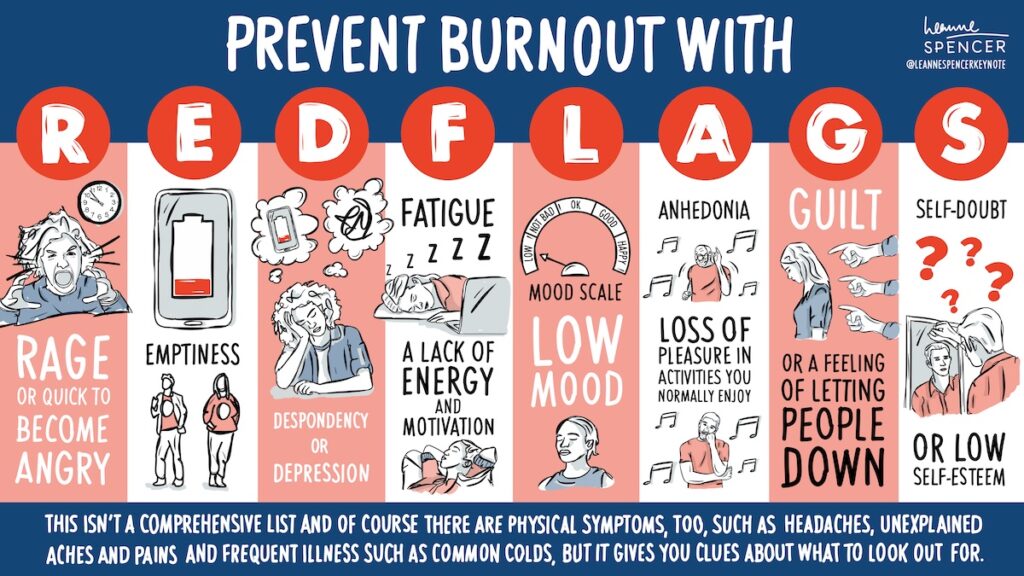It’s part three in our series of SNAPs about Cadence, the key to high performance. Cadence is a simple, four-step approach to managing energy that works. Part one was all about identifying the big events coming up for you – both professionally and personally. Then, we talked about what small actions you could take to ‘build your bulletproof’; to prepare for those events, but also to maintain a basic level of readiness for the things we can’t see coming. This time, I’m going to discuss the ‘perform’ phase. And you may be surprised to learn that it’s not about just getting things done. It’s about knowing your red flags for chronic stress and burnout, and respecting those as you go.
Remember: ‘REDFLAGS’

So, the ‘perform’ phase is about carrying out a task whilst respecting your red flags. But what actually are they?
Red flags are the telltale signs the body sends that you’re going a bit too quick, whether you’re trying to complete a task, or just in general. These include:
- R – rage
- E – emptiness
- D – despair
- F – fatigue
- L – lethargy
- A – anhedonia
- G – guilt
- S – self-doubt (or low self-esteem)
What’s that spell? You may find this acronym, ‘REDFLAGS’, helps you remember what to look out for!
What are yours?
Now, ideally, we’d like to catch it before we get to rage and despair. But I want you to think about what those red flags are for you. What are those telltale signs that you’re heading towards chronic stress or burnout? We can sometimes use wearable tech to surface these, but I think it’s important for us to know them intuitively. For me, a physical one is a flickering eyelid that I get when tired or over-caffeinated, or just pushing too hard. Tiredness is another one. Not a circumstantial tiredness from travelling or being out late, but a deep-seated tiredness. Anhedonia, too, which is a loss of pleasure in things you usually enjoy. Irritability – sometimes your partner is better at pointing that one out!
Show some respect
Do you know your red flags for chronic stress and burnout? And, perhaps more importantly, do you respect them?
We’ve certainly gotten very good at ignoring some of the signs our body sends us, but that’s not going to end well – trust me! So, know your red flags, pay attention to them, and have a strategy for butting the breaks on when they go up. Next time, we’ll be talking about the final phase, ‘recover’, and how to build more opportunities for deliberate rest into your day.
The Cadence Wellbeing Scorecard
The Cadence Wellbeing Scorecard is a tool that helps you assess and track your progress in achieving work-life balance, managing energy and improving overall wellbeing. By regularly taking the Cadence Wellbeing Scorecard, you can gain insights into areas of your life that may need improvement, identify patterns and trends over time, and set realistic goals for making positive changes.
Take the scorecard, and receive a free, personalised report with actionable insights you can take into your daily life to optimise your health and wellbeing.
Join us for our upcoming webinar
Join us for our latest webinar, BOND: How to create a culture of belonging and connection in your teams (in the age of AI), on Wednesday 28th February 2024, 1:00pm.


